Marrakech is famous for its cultural and historic sites in the old medina and its modern attractions in the colonial area of Gueliz.
The large and lively markets are another popular attraction in Marrakech, drawing visitors from around the globe to buy a variety of items and experience the atmosphere.
While many Moroccan cities and towns have souks, none are quite like those in Marrakech.
Table of Contents
Brief History of Marrakech’s Souks
Marrakech’s central location led to it being chosen as the Almoravid capital. After fortifying the city with high walls and strong doorways in massive gates, the city became a major center of trade.
Located along the Sahara trading route, convoys passed through en route to and from the Saharan regions.
As popularity grew, traders began coming to Marrakech from diverse parts of the country, eager to buy and sell diverse items.
There were smaller daily markets throughout the medina for residents, with larger weekly and monthly souks set up strategically throughout the area.
The famous Djemaa el Fna was once the scene of the biggest public market, with sellers setting up on the surrounding maze-like streets too.
Many of the souks took their names from the products sold there or the day of the week that they typically occurred in the past.
Find Your Way around the Souks
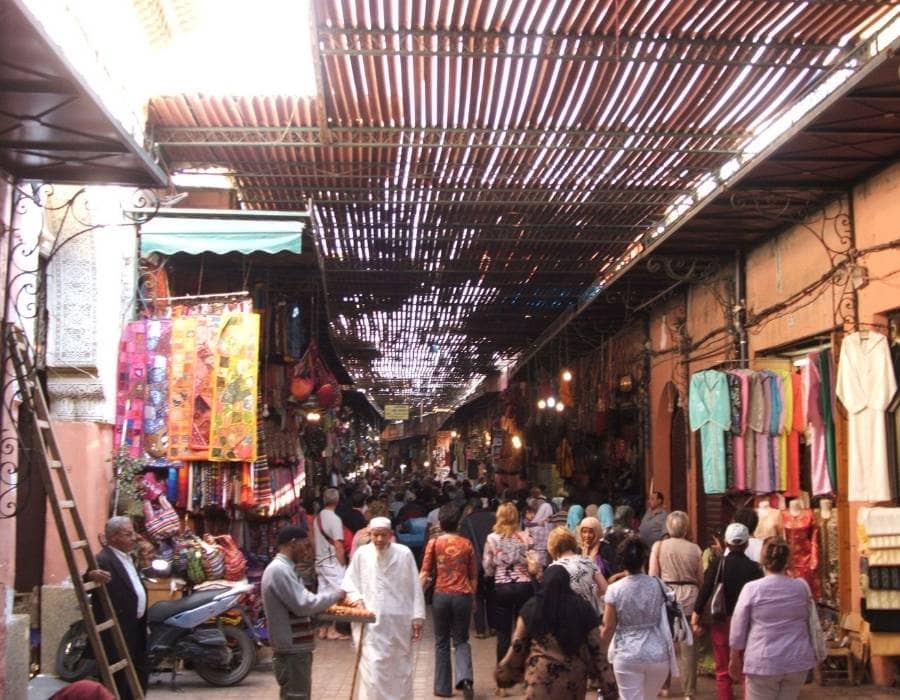
Marrakech’s souks, as with the medina in general, have narrow alleyways that are like a maze. It is easy to become disorientated and the streets and stalls can quickly start to look the same.
Make sure that you have a map and the address and phone number of your accommodation of you truly can’t make your own way back.
Remember that the medina is surrounded by a wall; by walking straight in any direction you should eventually come to the outer wall.
Then, you can simply jump in a taxi or walk around the edges to find where you want to be.
Look for landmarks to help you get your bearing; many people use the towering minaret of Koutoubia Mosque to assist.
Try to avoid asking random people for directions, as they may offer to take you and then demand a fee.
Instead, ask shopkeepers (who cannot readily leave their stalls), police officers, or families with children.
The souks can be a bit overwhelming at first, with the myriad sights, sounds, and smells, not to mention the crowds of people and the donkeys that trot through the narrow alleys.
If time is limited or you aren’t so confident at exploring the souks on your own, hiring a local guide can be the perfect way to enjoy the souks and discover things that you may have missed on your own.
What to Buy in Marrakech’s Souks
While you can buy almost anything you could possibly imagine in the large and diverse souks of Marrakech, there are some items that are especially prevalent or that make excellent souvenirs and gifts.
Of course, traditional items of clothing like the djellaba, kaftan, and leather slippers are abundantly available in various sizes and colors.
Cashmere scarves are versatile and add a little pizazz to any outfit.
They are also great for covering up in the sunshine and covering your hair in conservative areas.
Regular day-to-day clothing, woolen hats, Fez hats, and other clothing and accessories are sold throughout the narrow lanes.
There are plentiful leather goods, including watch straps, belts, bags, and wallets. Jewelry is another common item to buy in the souks. Silver bangles are especially popular, with many designs to tempt you.
There’s an array of rugs and carpets for sale in Marrakech’s souks, and with more than 40 Berber groups contributing to the local carpet scene, there’s sure to be one that catches your eye.
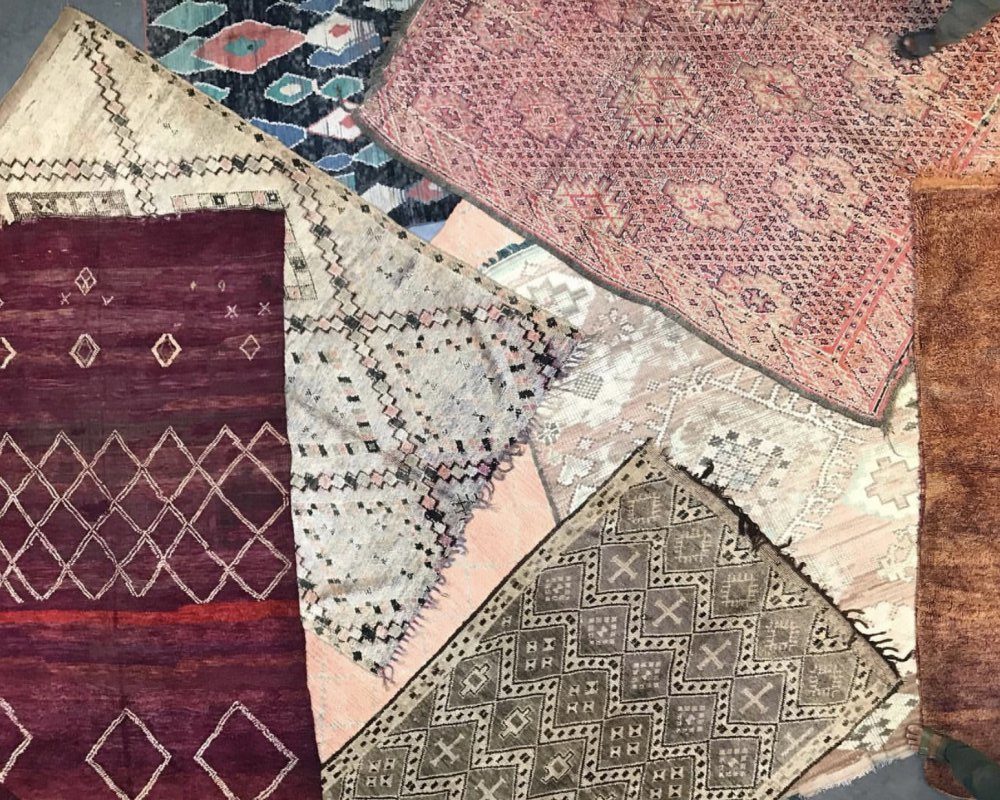
How about something to sit on? Footstools / poufs are widely available and they compact down pretty small.
Metal lanterns are other great additions to any home, and you may be tempted by ceramic vases with detailed patterns.
There are many smaller decorative items if space is a consideration, such as candlesticks, mirrors, and light pulls.
If you fell in love with Moroccan cuisine and want to replicated the tastes back at home, a tagine pot could be a great item to buy in the souks.
They are available in different sizes and with attractive colorful patterns. Do keep in mind, however, that they can be heavy to transport.
Dishes, tea sets, tea pots, colorful glasses, hammered metal pots and pans, and other cookware and kitchen/dining items can also be found in the souks.
Naturally, producing Moroccan dishes requires certain ingredients. Pick up jars of olive and bottles of olive oil, dried fruits and nuts, as well as an array of spices.
When it comes to trinkets you’ll be spoilt for choice; from keyrings and fridge magnets to pencils and small ornaments, there’s no end of kitsch to take home with you.
Although not produced in Marrakech, vendors offer an assortment of products made from the sought-after argan oil.
You’ll find face creams, body lotions, soaps, lip balms, hair-care products, and more. Other cosmetics and toiletries are also for sale throughout Marrakech’s souks.
Ghassoul clay is another local product to keep your eye open for; it plays a prominent role in the hammams.
Toys, novelty items, musical instruments, artwork, textiles, and medicinal remedies are just a few more things that you’ll find on the stalls of Marrakech’s souks.
How to Haggle and Negotiate for the Best Prices
The prices you pay in the souks ultimately depend on your skills. To begin with, you should have a general idea about what you want to buy and the approximate costs.
It always helps to get an impartial opinion as to price ranges, for example from somebody that works in your hotel or riad. Visit several stalls to compare prices.
Note: don’t enter into in-depth negotiations at this stage, simply compare the prices offered. Only begin bargaining when you intend to make a purchase.
Let the seller state the first price and offer a much lower price. The aim is to try and reach a price that is beneficial for both parties.
Remember, the vendor won’t sell the item at a price that isn’t good for them.
Likewise, though, keep in mind that people are ultimately trying to make a living and don’t get caught up in arguing over relatively small sums.
Keep in mind the currency exchange and how much you would be happy to pay for the item.
Common Scams and Tricks in the Souks of Marrakech
Fake guides:
Several fake guides operate around the souks, offering to help tourists to find the best shops and to help them to negotiate for lower prices.
You may get a lower price than the asking price, but this includes a commission for the guide … who will probably also want a tip after your shopping experience too.
Only explore with a licensed guide and still exercise caution when certain establishments are more recommended than others.
Fake products:
As with most large markets around the world, there are many fake items for sale in Marrakech’s souks, with many passed off as being authentic.
Make sure you know how to spot a genuine from a fake and, if in doubt, leave the product behind. Also, if an offer is too good to be true proceed with caution!
Henna tattoos:
Be wary of henna tattoo artists in Marrakech, especially around Djemma el Fna and the nearby souks.
A common scam is for a woman to grab your hand and to start creating a simple design without you asking for it.
A combination of curiosity, sweet talking from the artist / trickster, and surprise often means that people allow them to finish their quick design.
If you say then that you do not want a larger or fuller design they will generally try to extract payment for the smaller design.
A payment that is often disproportionately high and ultimately for something that you didn’t ask for and didn’t want!
They can be quite pushy so avoid the situation altogether and pull away from any henna artists who approach you.
Always check the money
Be careful with money that you are handing over and check your change too. As with most crowded places, be cautious of pick pockets and bag snatchers.
Different Souks in Marrakech
Marrakech has protected its rich trading heritage, with numerous fascinating souks still found in the old city today.
Though it can be difficult to discern where one souk ends and another begins, with overflowing stalls along tiny streets, there are several distinct souks that sell different products. Some of the city’s souks include:
Souk Naal
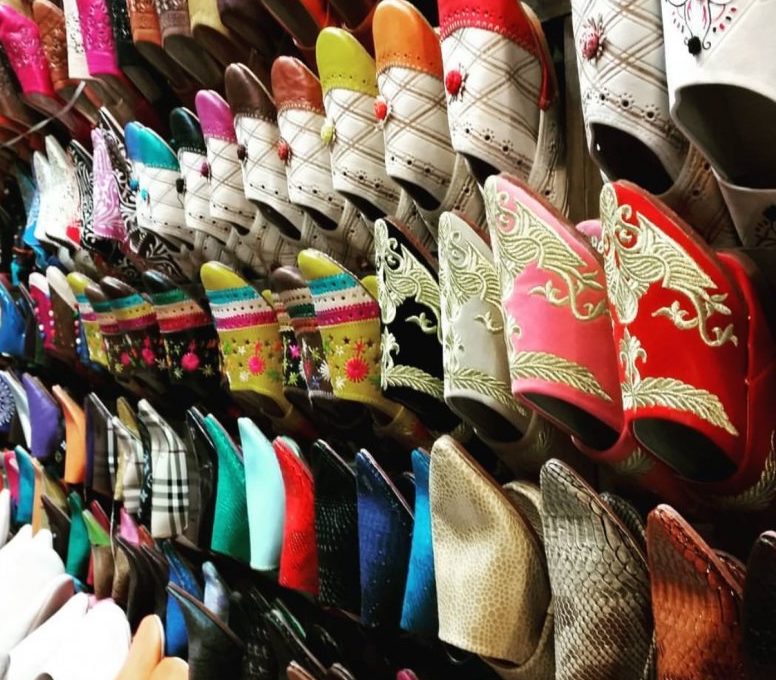
This souk was dedicated to selling handmade leather slippers for the shoe industry.
The market continues to sell traditional Moroccan slippers, known as balga, today, with many artisans found on the nearby streets.
Al Attarin Market
This market was known for the sale of silver and copper items, with pots, dishes, jugs, trays, tea sets, ornamental items, and more.
The market continues to set up every day except Friday, dazzling people with its intricate and well-made metal works.
The Market of Qashashbia
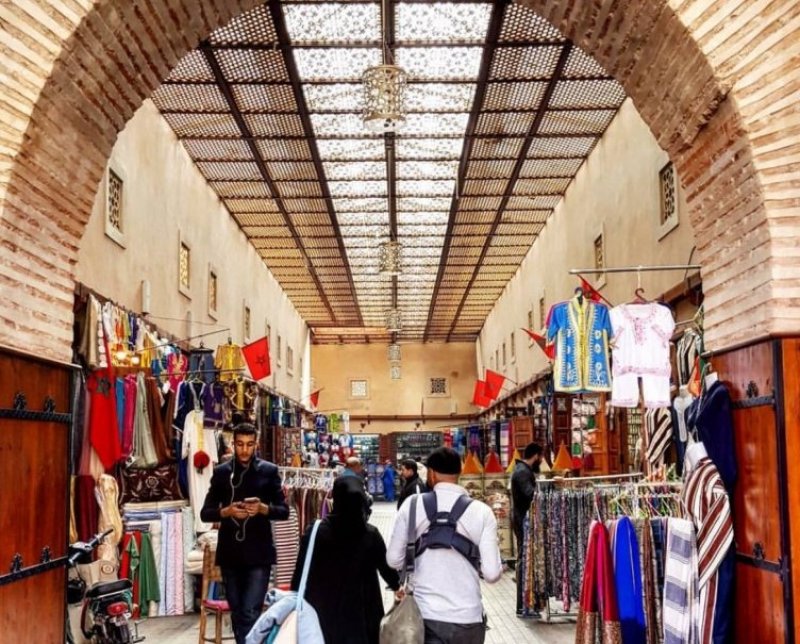
The Market of Qashashbia was established by makers of the djellaba, the traditional cloak-like garment worn by many Moroccans.
The tailors still work hard to produce quality clothing and the souk now offers an array of other traditional textiles too.
Market of the Takmouti
The Market of the Takmouti became known for its exquisite jewellery and precious metals.
Named after the silversmiths of Takmut, this is a great souk in Marrakech for anyone who wants to browse and buy beautiful handmade jewelry.
Souk al Haddadin
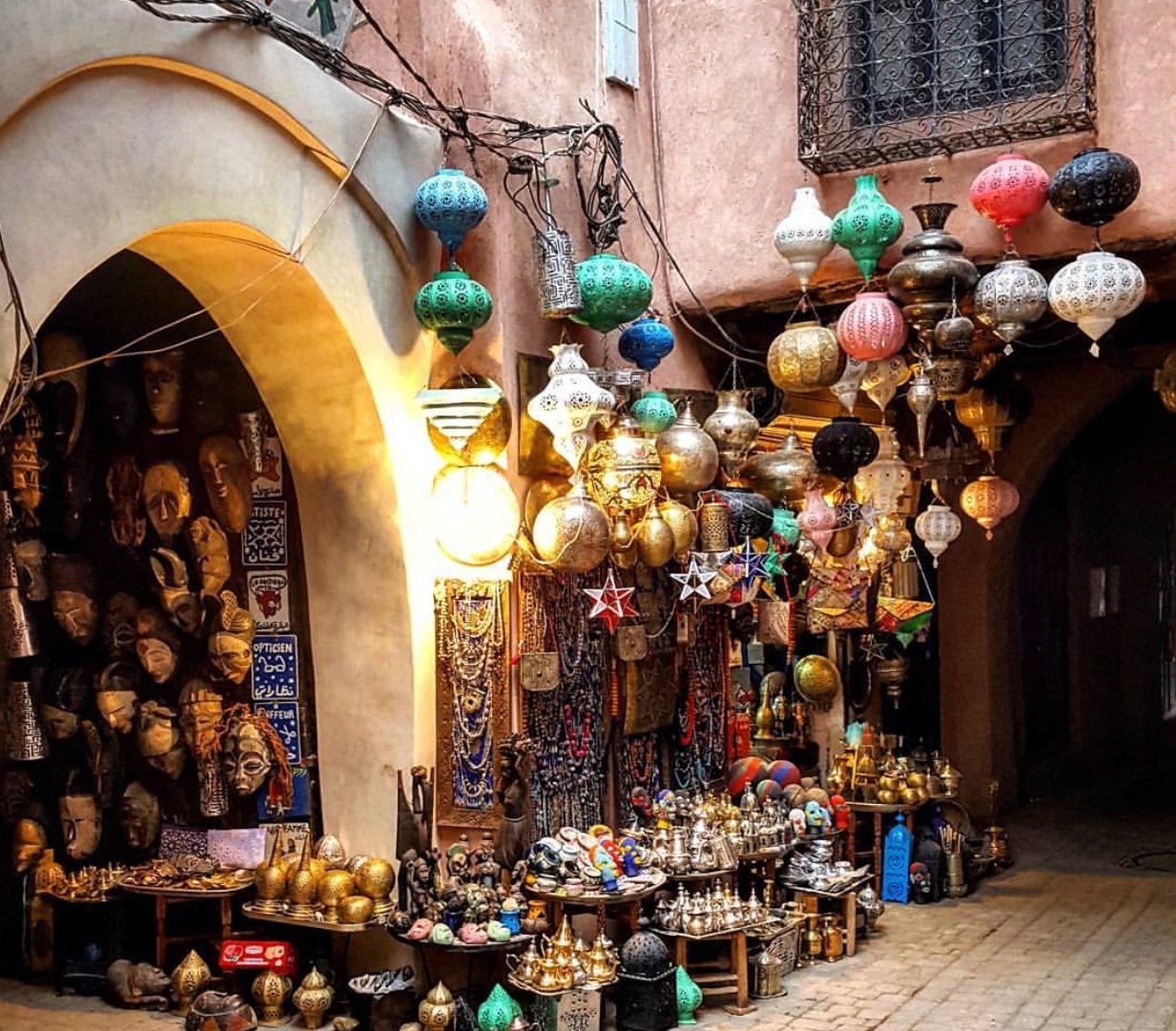
Souk al Haddadin was previously a hive of activity before the religious festival of Eid al-Adha, with many people flocking to buy knives and cutlery.
Nowadays, the blacksmiths make essential household items all throughout the year.
The artisans also specialize in beautiful iron decorations. The attractive pieces are also exported to various countries around the world
Souk el Kemakhin
This market specializes in the leather saddles, with leather from the nearby tanneries used to produce good quality riding equipment. You’ll also find a wide selection of lamps here too.
Souk Al Sabbaghain
The specialty of this market is dyeing yarns used in the manufacture of traditional woven carpets. Watch skilled craftsmen dyeing the wool in a variety of colors.
Souk Ahayek
The al Hayek is a robe that is worn by women. It’s made from wool. This souk takes its name from this garment and some of the shops here still specialize in knitted clothing.
Souk al Jeld
Souk al Jeld was once a well-known market for people seeking repair work to leather items.
It is still active in trading in dyed leather products, and is a major supplier of leather slippers and other goods made from leather, including bags, belts, watch straps, and so on.
Old Rahba Market
This market was previously dedicated to the sale of grain. Today you can find all kinds of medicinal herbs and spices, snails, and other culinary and medicinal products
Souk al Najjarin

Souk al Najjarin is known for its skilled wood makers. You can browse a wide array of exquisite wooden wares, big and small.
The details in the cravings are very impressive, and you can watch as artisans carefully cut, saw, chisel, and file pieces of wood to get the details just how they want them.
Souk lghzel
This souk was previously a major place for buying and selling woolen yarn. Today, however, it is mainly filled with ladies selling a variety of used and new clothes.
Souk Fekharin
Souk Fekharin is a great place to source pottery. Various items are available, including vases, dishes, jugs, and decorative wares. There are many shapes, styles, and colors to catch your eye.
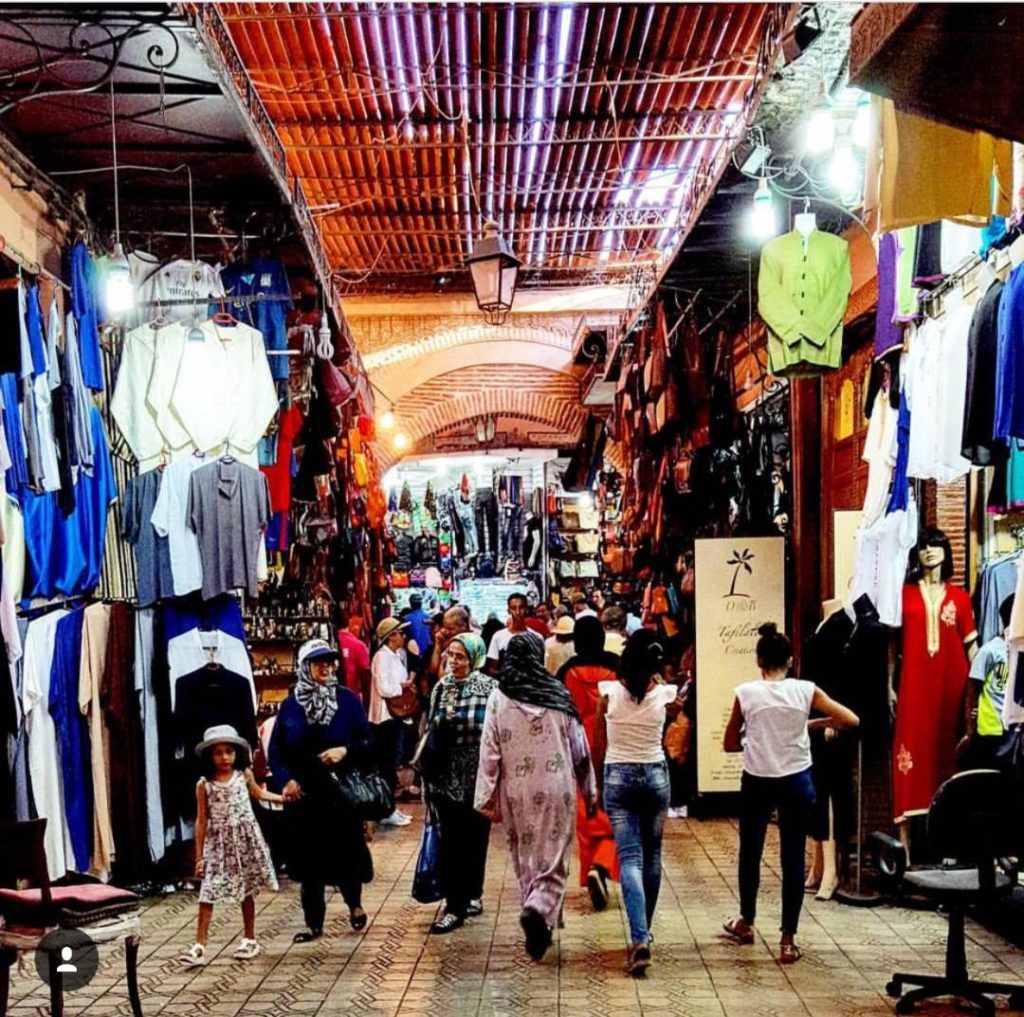
Curious what Souvenirs to buy?
Marrakech has such a great amount of gifts to take, however where does one start? To point you in the correct heading, here’s are some ideas on what to purchase in Marrakech..